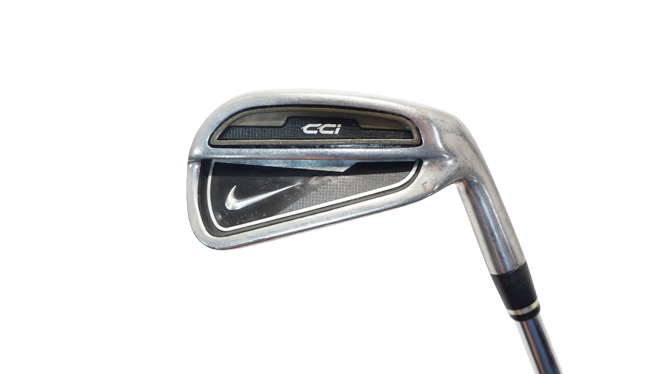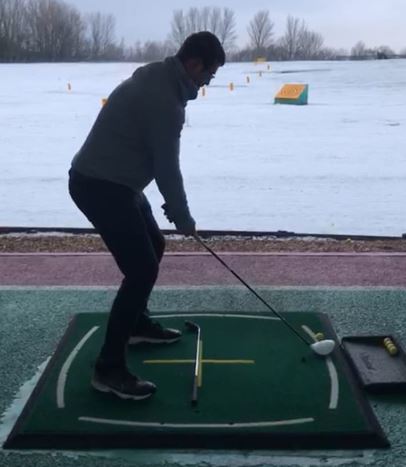Are Nike CCI Irons Still Good? Are They Forgiving For High Handicappers?

“Around the dawn of 2010, Nike was experiencing a renaissance of sorts with their irons.”
They were hitting it out of park year after year over the span of about eight years. I remember the Nike Slingshot and NDS irons very fondly. They looked amazing and kept up with the game improvement irons being produced by the likes of Ping and Taylormade.
The Nike CCI irons come out of that same golden age. Unfortunately though, I remember Nike fans being divided on the CCI irons. Some were disappointed that they weren’t as forgiving as the slingshot irons while others praised the improved workability and more traditional looks.
So when it came time for me to revisit the Nike CCI irons, I wanted to decide once and for all which side of the debate I landed on and whether they are viable for high handicappers.
Are the Nike CCI Irons Still Good?
“The Nike CCI irons came in cast and forged versions. I will compare the two versions in a later section but most of my testing was done on the cast CCI’s.”
The Nike CCI irons are cast from 431 stainless steel. By today’s standards, 431 stainless steel isn’t anything new or innovative but it’s still the go-to material for a lot of manufacturers. In the Nike CCI irons, I felt that the 431 stainless steel gave a clean, responsive feel. More importantly, the feel was consistent across the face. Even on mis-hits, I was still getting the same crisp feel and sound.
The Nike CCI irons also feature a composite cavity plate. The plate is mostly made of polymer and fills the top portion of the cavity. The plate is anchored by a tungsten plug that brings the CG down. The polymer absorbs unwanted vibration and adds to the smooth, pleasing feel of these irons.
One thing I liked about these irons right away was that they felt comfortable. There is no shocking jolt when you miss the sweet spot and when you hit face-center, there is a very satisfying click. I will say that the feedback is a bit muddled because of the softer steel used for the casting of these irons. And maybe the polymer cavity plate has something to do with the muted feedback as well.
But all in all, these are nice-feeling irons. They look amazing as well. Nike irons from this era are known for their sharp, premium looks and the Nike CCI’s are no exception. The topline is on the thin side and the soles are moderate. There is a bit of offset; but not enough to mar the good looks of these irons at address.
In terms of looks and feel, the Nike CCI irons are exactly what I expected from this era of Nike irons. But how did they perform?
Are Nike CCI Irons Forgiving for High Handicappers?

“The Nike CCI irons have an interesting profile.”
The toplines are thin and the cavity back isn’t very deep. So overall, you get a thin-looking iron at address. But behind the ball, I was really surprised at how deep the faces were. If these were more traditionally-shaped irons, the high toe area wouldn’t look out of place. The toe would start high and then slope down significantly towards the heel.
With the Nike CCI irons, the toe area starts high but doesn’t slope down very much near the heel. What you end up with is a squared profile and a high heel area. This is probably the best thing about these irons for high handicappers. In my specific case, I liked that it gave me a lot of up and down leeway. And I expect high handicappers will appreciate that as well.
As a result of this face shape, I was getting really good ball speeds on low-face strikes and heavy swings. The thin sole was a bit challenging off the turf; but I got used to it quicker than I thought I would.
The Nike CCI irons produce a mid flight which worked really well for my swing. With the 7-iron, I was getting an average of 163.4 yards of carry distance. The dispersion was also tight. I found myself hitting my usual draw after about an hour of swinging. At the end of the day, these are moderately forgiving irons.
Nike CCI Vs Nike CCI Forged Irons
“The Nike CCI forged irons feel even softer thanks to the 1025 mild carbon steel.”
Nike also got rid of the polymer cavity insert and switched it out for tungsten weights in the sole. As a result, the Nike CCI forged irons yielded much clearer feedback while maintaining a substantial, solid, “thud” at impact.
The Nike CCI forged irons may be a tad less forgiving than the Nike CCI cast irons; but players who are used to premium feel will appreciate the Nike CCI forged irons.
Nike CCI First Impressions

“The first thing that struck me was the boxy frame.”
It looks a little awkward at first but it definitely serves a purpose: it gives you a wide margin for up-and-down error.
Nike CCI Selling Points
- 431 stainless steel
- Tungsten weight plug
- Polymer cavity plate
- Low CG
- Thin sole
Nike CCI Key Technology
Polymer Cavity Plate
The cavity plate seems to increase face flexion for further distance.
Low CG
The Nike CCI irons have a low center of gravity which makes it easier to increase your apex height.
431 Stainless Steel Casting
The cast stainless steel bodies are durable and provide a crisp feel.
Nike CCI Loft & Lie
| Club | Loft (degrees) | Lie (degrees) |
| 2-iron | 18 | 58.5 |
| 3-iron | 20 | 59.5 |
| 4-iron | 23 | 60.5 |
| 5-iron | 26 | 61.5 |
| 6-iron | 29 | 62.5 |
| 7-iron | 33 | 63 |
| 8-iron | 37 | 63.5 |
| 9-iron | 41 | 64 |
Who Should Buy the Nike CCI Irons?

“They are for anyone looking for a good mix of forgiveness and tight dispersion.”
At the end of the day, these aren’t the most well-rounded Nike irons I’ve ever tested. But Nike clubs from this era set a very high bar so that’s not a knock on the CCI’s at all. They are moderately forgiving and as long as you can get comfortable with them, they will reward you with above average dispersion.
Distance: 97/100
Forgiveness: 96/100
Workability: 96/100
Overall Performance: 96/100
Value: 96/100





